#Pedro Jiménez
Explore tagged Tumblr posts
Text
La tradición del Pisco Chileno: Un destilado emblemático
La tradición del Pisco Chileno: Un destilado emblemático El pisco chileno es un destilado emblemático de Chile. Con una rica historia y variedad, destaca en la cultura y economía del país.
El pisco chileno es un destilado emblemático de Chile. Con una rica historia y variedad, destaca en la cultura y economía del país. El pisco chileno es uno de los destilados más emblemáticos y apreciados de Chile, conocido por su sabor distintivo y su rica tradición. Este aguardiente de uva ha sido una parte integral de la cultura chilena durante siglos, y su producción es un arte que se ha…
#aguardiente#aguardiente de uva#alambiques de cobre#América del Sur#Atacama#bebida#Blackjack#bodegas#casinos en línea#Chile#Coquimbo#cultura chilena#destilados#destilerías#dinero real#fermentación#grado alcohólico#Gran Pisco#industria del pisco#juegos de casino online#Moscatel#mosto de uva#Pedro Jiménez#pisco chileno#Pisco Corriente#Pisco Especial#Pisco Reservado#Pisco Sour#Pisco Tradicional#Póker
1 note
·
View note
Text
He vuelto a comprar esta obra por su preciosa y evocadora cubierta. Yo quisiera vivir en esa casa eternamente.
[29-XI-2023]

Pequeños poemas en prosa, de Carlos (sic) Baudelaire (Jiménez Fraud Editor, 1921). Traductor: Pedro Vances.
3 notes
·
View notes
Text
Hay muchos parecidos, demasiados
Por Juan Manuel Jiménez Muñoz Entre 2020 y 2021, como médico de familia en la capital malagueña, luché contra el desconocido COVID mientras mi hijo y mi hija, enfermeros ambos, eran destinados al área de infecciosos de dos hospitales de Málaga. Muy expuestos los tres al contagio, “protegidos” por mascarillas quirúrgicas entregadas a cuentagotas y por bolsas de basura que hacían funciones de…

View On WordPress
0 notes
Text
PEDRO SÁNCHEZ-TORQUEMADA DE TEZANOS Rafael Dávila Álvarez
Nobleza obliga y apellidos para gran señor. El escudo nobiliario en marcha. He recordado a D. José Jiménez Lozano, Premio Cervantes, y para mí uno de los mejores escritores de la historia. El sambenito es una de su primeras novelas, inolvidable, donde el protagonista es el peruano Pablo de Olavide que viviendo en España se le cruzó la Inquisición juzgándole en Sevilla por ilustrado. La novela fue…

View On WordPress
#D. Jose Jiménez Lozano#El sambenito#la Inquisición#Nicolás Maquiavelo. La Vida de Castruccio Castracani#Pablo de Olavide#Pedro Sánchez-Torquemada de Tezanos. El Príncipe de los Cinco Días#Plan de acción democrática#Premio Cervantes#Rafael Dávila Álvarez Blog: generaldavila.com#Tezanos S.L.#Torquemada
0 notes
Text
#XOSÉ HERMIDA#Madrid - 28 ABR 2024 - 05:40 CEST#2024#el pais#202404#20240428#Gobierno de España#Madrid#Política#Escándalos políticos#Pedro Sánchez#capital furiosa#federíco jiménez losantos
0 notes
Text
Castellon présente les cartels de sa Feria 2024
OFFICIEL : Les cartels de Castellon dévoiles
L’empresa Funtausa a présenté les cartels de la Feria de la Magdalena 2024 de Castellon qui aura lieu du 3 au 10 mars. 5 corridas, 1 rejon et 2 novilladas sans picadors composent cette édition avec la double présence de Jose Maria Manzanares et un mano a mano en ouverture qui sera arbitré par les toros de Victorino Martin. Les cartels de la Feria de la Magdalena 2024 de Castellon : Dimanche 3…
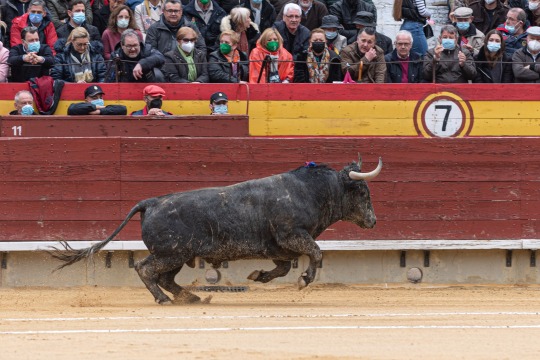
View On WordPress
#Alejandro Talavante#Andrés Roca Rey#Borja Jiménez#Bruno Gimeno#Domingo Hernandez#El Fandi#Fernando Adrian#Garcia Jiménez#Ginés Marin#José Maria Manzanares#Juan Ortega#Juan Pedro Domecq#Morante de la Puebla#Pablo Aguado#Paco Ramos#Puerto de San Lorenzo#Sébastien Castella#Tomas Rufo#Victorino Martin
0 notes
Text
Sèrie infantil animada de Concepción llança inèdita cançó per a comunitat sorda xilena
Ricardo Cárcamo / diarioconcepcion.cl Que la música és un llenguatge que arriba a tots és cert. I una prova més d’això és el treball que va realitzar “Go, go Gall Pipe”, sèrie infantil de TV *penquista, que ahir va llançar “Pedala Pedro”, inèdita cançó per a la comunitat sorda…[…] (diarioconcepcion.cl)

View On WordPress
0 notes
Text
"I had to fight to be myself and to be respected. I'm proud to say I'm a lesbian. I don't talk about it too much, but I don't deny it. I've had to confront society and the Church, which says that homosexuals are condemned. It's absurd! How can they judge someone who was born that way? I didn't learn to be a lesbian, nobody taught me to be the way I am. I was born this way. I've never slept with a man. I've never slept with a man. Yes, I'm a virgin and I'm not ashamed. My Gods made me this way"
- Chavela Vargas
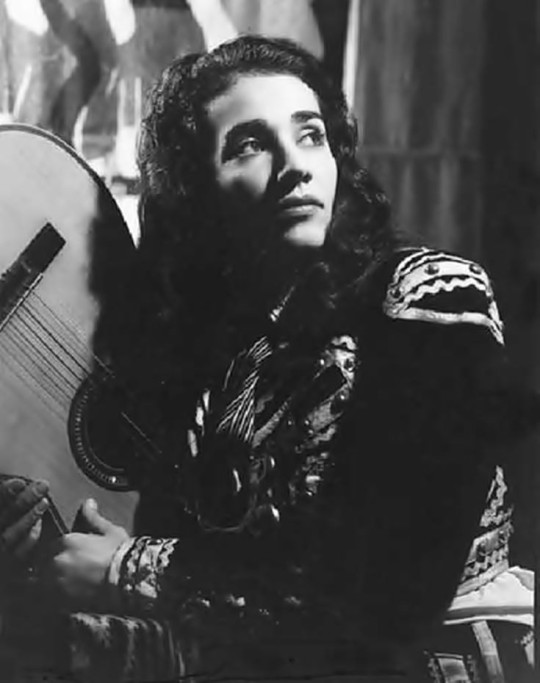
Chavela Vargas (María Isabel Anita Carmen de Jesús Vargas Lizano) was a Mexican singer of Costa Rican origin, born in 1919 in Costa Rica and died in 2012 in Mexico.
She is considered a leading figure in ranchera music, which she sang with strength and emotion. Her voice, rough and warm at the same time, served her theatrical, passionate and human interpretations of standards from the traditional Mexican repertoire.
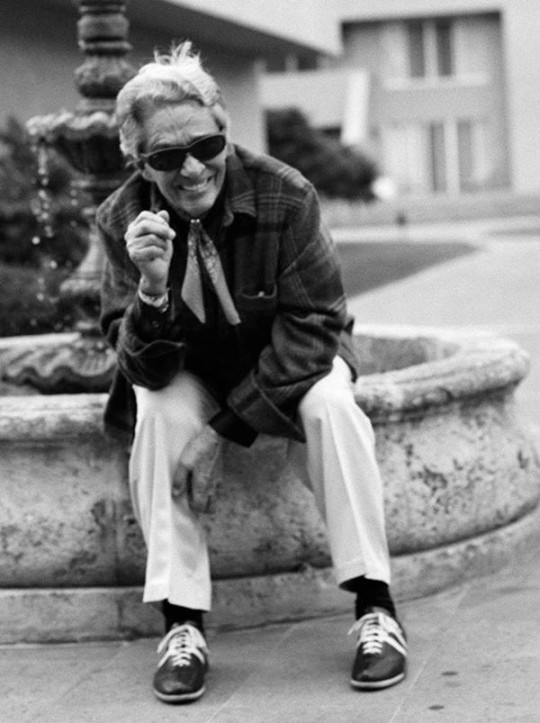
"And since I have to say it almost everywhere, I'll say it: my parents didn't want me. I suffered for it".
She has an extremely difficult and conflicted relationship with her family, who do not accept her in any way. As a teenager, she left her country and her family for Mexico. The young woman rejected and criticised the ultra-conservative society in which she lives. Once in Mexico, she began singing in the streets.
In the 1940s, she became friends with the painters Diego Rivera and Frida Kahlo, staying with them for a while and becoming Frida Kahlo's lover.
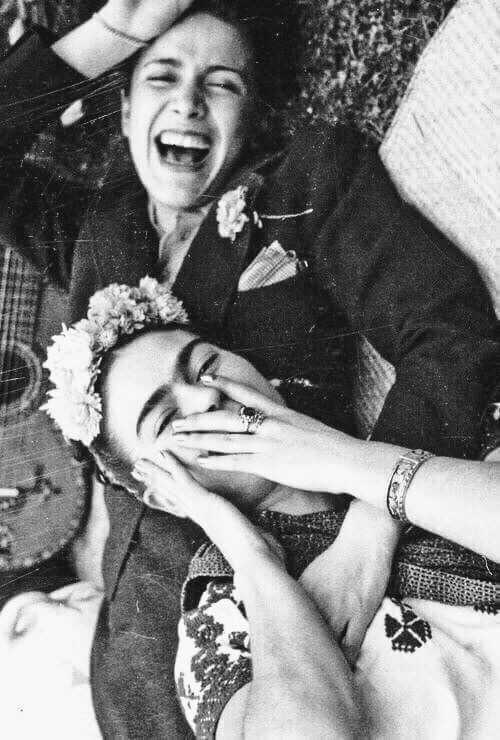
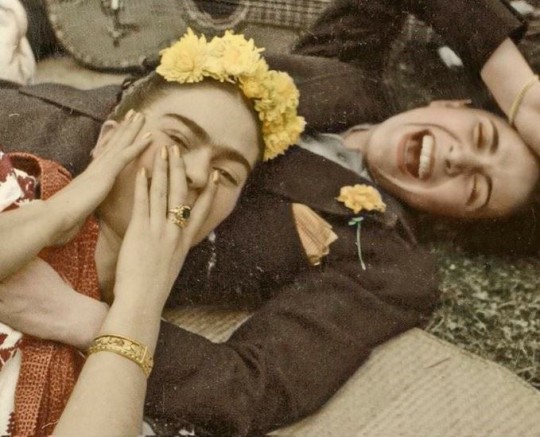
At the age of 30, she was noticed on Mexico City's Avenida Insurgentes by the composer and famous rancheras singer José Alfredo Jiménez, who became the author of her main hits. With his help, she performed in the cabarets of Mexico City in the mid-1950s before embarking on the road to success in Acapulco, an international tourist destination, where she sang at one of Elizabeth Taylor's weddings.
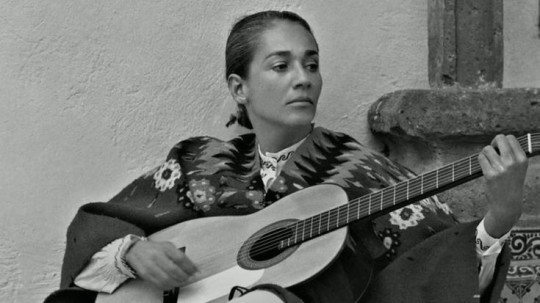
Chavela Vargas rose to fame in the 1960s and 1970s, touring the world. She became a well-known figure in ranchera song, to which she gave a new lease of life.
Dressed like a man, smoking and drinking like a man, carrying a pistol, "the lady with the red poncho, silver hair and brown flesh" as the Spanish singer Joaquín Sabina described her, is characterised by her red sarape.
In a television interview in 2000, she came out as a homosexual woman. This is where the text at the beginning of the post is from!
Chavela's career reached its peak from the recording of her first album (Noche de Bohemia) in 1961 until the end of the 1970s. This was followed by a long period of fifteen years, during which the singer, suffering from a heavy addiction to alcohol, interrupted her musical career, which she did not resume until 1991.
Encouraged by her friend, the director Pedro Almodóvar, who compared her to Édith Piaf, Chavela embarked on a world tour, performing at the Olympia in Paris and Carnegie Hall in New York. Among her most outstanding performances was Tú me acostumbraste by Frank Domínguez in Pedro Almodóvar's film Babel. Being a close friend of Pedro, she has appeared in several of his films, including The Flower of My Secret.
Following a final concert in Madrid on 10 July 2012 to present her album (La Luna Grande), she was hospitalised in the Spanish capital with serious respiratory problems. She died on 5 August 2012, aged 93.
I am sure you know at least one of her song, La Llorona !
In any case, Chavela was an immense artist who had a profound impact on music, and I'm delighted to have discovered her, or rather re-discovered her. I listened to some of her songs and they're amazing if you like that kind of music ! And please look her up yourself, she was such an interesting person, I couldn't talk about everything in this post or it would have been too long !
#chavela vargas#music#mexican music#ranchera music#lesbian#lesbian pride#lesbian history#pride#lesbian culture#lesbian artist#female homosexual#female homosexuality
183 notes
·
View notes
Text
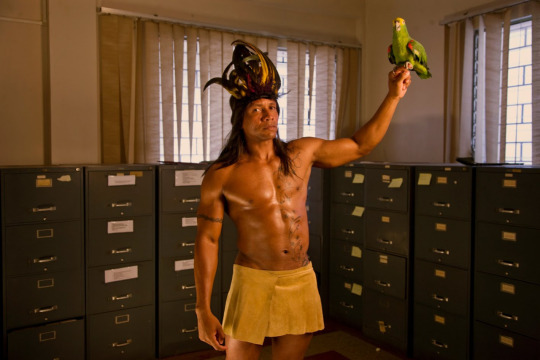
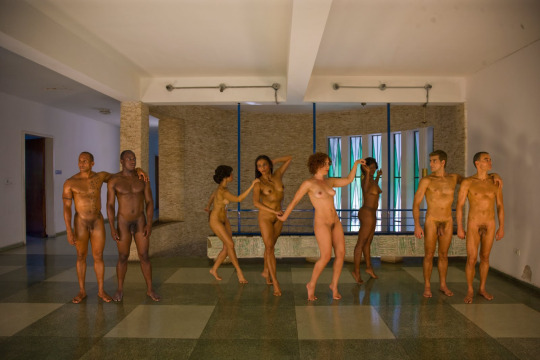
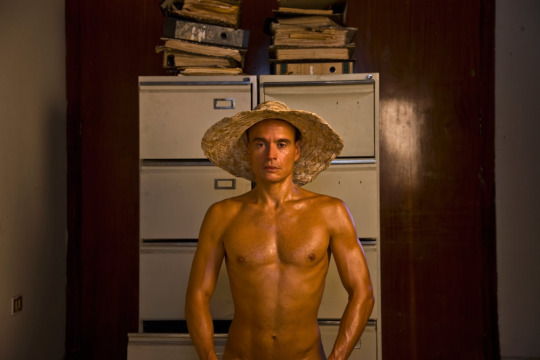
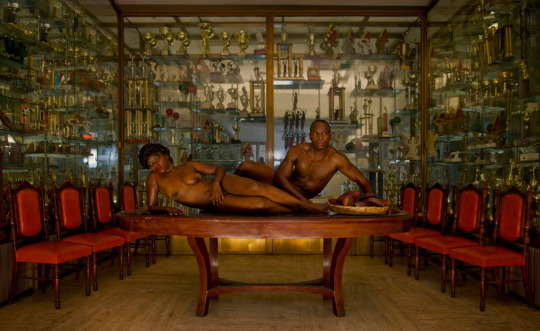
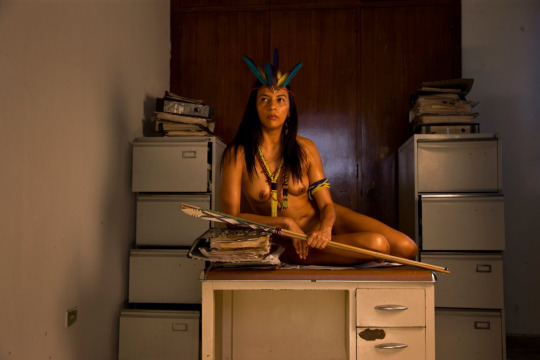
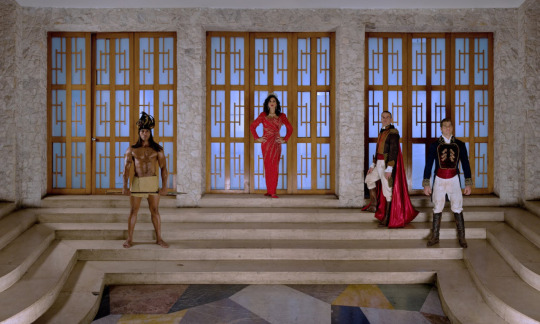
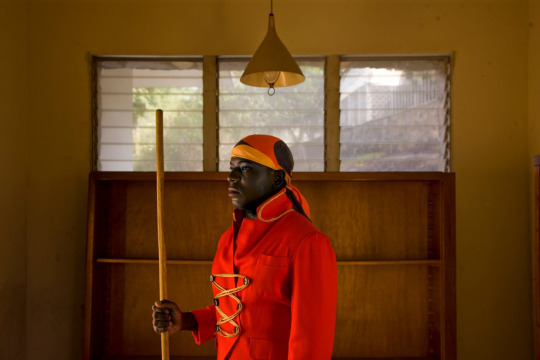
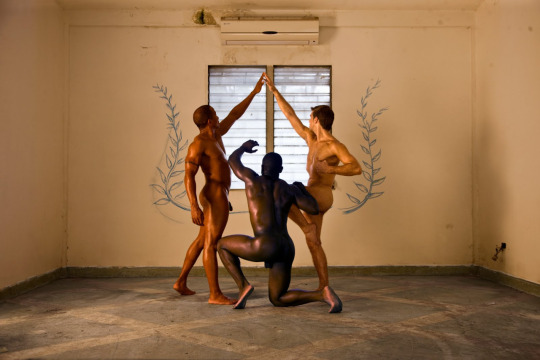
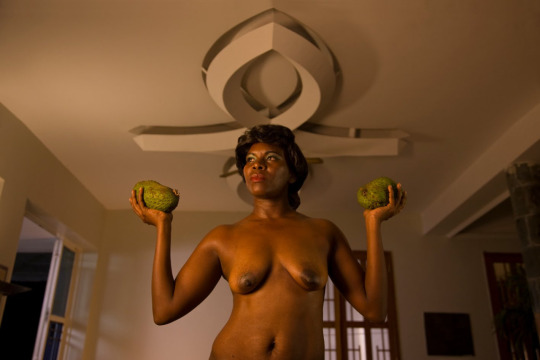

Ensayando la Postura Nacional by Alexander Apóstol
Based on the paintings of Pedro Centeno Vallenilla
Caracas experienced a strong urban construction growth after the death of the dictator Juan Vicente Gómez in 1936 until the 70´s. Important political changes: European and Latin-American migrations, and especially petroleum costs variations made Venezuelan mentality change at a speeding race to new perspectives that were demonstrated in different areas, architecture being the main element of change towards a modern city. Besides the big social differences, from then on, the Venezuelans have conceived to an extreme this modern period of time as the dream of a better future. In that time, important plastic artist irrupted during the 40´s, 50´s and 60´s; Escuela de caracas (landscaping), Los Disidentes (abstraction), and the Techo de La Ballena (informalism) were some of the most important avant-garde movements. Curiously enough, the Venezuelan artist Pedro Centeno Vallenilla, formed under the fascist Italian regime and exhibitor of a peculiar nationalist theme with a characterized mannerist and exaggerated aesthetic, worked independently from the avant-garde movements, he was even considered as a minor artist by them. Due to Vallenilla´s profound political views at the time, he was able to establish himself as the official painter during the dictatorship of Marcos Pérez Jiménez in the 50´s, where buildings like the National Capitol, the National Military or collections and private homes were decorated with his Works. Nowadays his works are still hung in these official buildings, where the nation’s history and the autochthonous elements together with the exaggerated and idealized aesthetic of the body and race, are the main characters in his work. What interests me is how his fertile visual language feeds the creation myths of the birth of the nation and establishes it like a part of the Venezuelan culture, in the political, social, military and even economic grounds of the country; where his work exemplifies, maybe fortunately, the prejudice, contradictions and acceptations on how Venezuelans want to see ourselves and how we wanted to be seen (and still want to be), contrasting with the exacerbated and vulnerable narcissism that fundaments itself on the starting resentments that we drag on form the colonial times. Finally I would like to focus Centeno Vallenilla´s work, independently from his pictorial quality, like the heir of a confused Venezuelan modernity in conception and ideology, confronted in the same way with the confused and complex political and social times that we are now living. Where the frontier between liberal ideologies and economic pragmatism associated with the conservatives, are faded together with the political ways of the country. In the film and photos, works of Centeno Vallenilla dedicated to the nation’s history, race and traditions, are converted into a tableaux vivant by people that come from the marginated areas of Caracas, but that are situated in the natural context of this artist, these spaces are modern but at the same time unused buildings, like a mansion turned into an office building; Nevertheless, these models try again and again, without achieving the goal, of recreating work by work The forced postures of the personalities represented in Vallenilla´s Works, demonstrating that there is a possibility that the idiosyncrasy of Venezuela comes from the eternal intent, with form but without meaning, of imagining improvised utopias that result in mere rehearsals of the country.
#art#paintings#photography#venezuela#pedro centeno vallenilla#venezuelan#alexander apóstol#venezuelan art
91 notes
·
View notes
Text

La poesía alcanza lo no dicho, y lo deja sin decir. Es familiar, está indecentemente cerca, a veces es abrumadora, como grises cielos nublados sobre cordilleras melancólicas; es lo que es, y queda por siempre la pregunta sobre su naturaleza, y por qué seguimos buscando una respuesta.
Etel Adnan, extracto de Sea and Fog. Traducción de Pedro Jiménez.
Foto: Etel en New York, 1979. Simone Fattal
20 notes
·
View notes
Text
🚲 Laurent Fignon, Lucien van Impe, José Patrocinio Jiménez y Pedro Delgado.
🔥 Es el Tour de Francia de 1983.
#Ciclismo #Cycling #Cyclisme #Tour #TourdeFrancia #TourdeFrance #ParaTi #DedicadoaTi #RamónCabezas #RamónCabezasEzquerra #CristóbalCabezas #CristóbalCabezasMartín

2 notes
·
View notes
Text
Revelan Thomas Rivera Schatz elabora presunto "complot" para sacar de carrera a Pierluisi

Dicen que de frente apoyaba al gobernador pero de espalda su respaldo era con la comisionada residente Jenniffer González obteniendo un saco de votos de ambos bandos.

La exdelegada congresional, Elizabeth Torres, dijo en Normando en la Mañana que el senador Thomas Rivera Schatz y la comisionada residente Jenniffer González elaboraron un "complot" para traicionar al gobernador Pedro Pierluisi y "tomarlo de idiota".
Mientras, el alcalde de San Sebastián, Javier Jiménez, dijo que Rivera Schatz de frente apoyaba a Pedro Pierluisi como candidato a la gobernación, pero de espalda su respaldo era con la comisionada residente Jenniffer González obteniendo un saco de votos de ambos bandos.
Esto no debe sorprender a nadie. Muchos en Puerto Rico saben lo puerco que es Thomas Rivera Schatz. Pero me alegro que esto esté pasando en el partido más corrupto de Puerto Rico, el PNP.
#puerto rico#politicos corruptos#esto es puerto rico#despierta puerto rico#corrupción en puerto rico#despierta boricua#corrupción#puertorriqueños#politicos de mierda#corrupt politicians#thomas rivera schatz#el partido mas corrupto en puerto rico#el partido pnp#el gobierno de puerto rico#la corrupción en puerto rico#notiuno#pedro pierluisi#noticias de puerto rico#noticias importantes sobre puerto rico#noticias de pr#la politica en puerto rico#politicos de puerto rico#dirty politics#politicos incompetentes#politicos basura#SoundCloud
4 notes
·
View notes
Text
Perdón
Por Juan Manuel Jimenez Muñoz La presidenta electa de Méjico, “miembra” de la facción podemita del mundo mundial, “ha castigado al jefe del Estado español, Felipe VI, por no pedir perdón por la conquista de América”. El castigo ha consistido en no dejarlo asistir a su toma de posesión como nueva mandataria mejicana; algo parecido a como se castiga a un niño cuando hace una travesura: hala; te…

View On WordPress
0 notes
Text

Pedro Díaz de Oviedo (finales del siglo XV – principios del siglo XVI)
San Orencio
h. 1498
óleo sobre tabla
176,5 x 146 cm
Nº inv. P00414
Colección BBVA España
La obra, al igual que Santa Paciencia —también en la Colección BBVA—, procede de la iglesia de San Lorenzo de Huesca y formó parte del antiguo retablo mayor realizado en torno a 1500, que fue desmontado a principios del siglo XVII al derribarse la basílica. De dicho retablo se han conservado fragmentos dispersos, algunos hoy depositados en el Museo Diocesano de Huesca.
Este retablo inicialmente se atribuyó a Pedro de Aponte (documentado entre 1505 y 1530), pintor aragonés de prestigio casi mítico al que se asignaron muchas obras de esta época, pero más tarde se descarta esta autoría. Posteriormente, Chandler Rathfon Post las atribuyó a un tal Maestro de Huesca, formado seguramente con Miguel Jiménez (documentado entre 1462 y 1505), del que toma los halos dorados decorados con círculos concéntricos en relieve. Aunque perdure en ella mucho del gusto flamenco por los pliegues quebrados y la minucia decorativa, muestra rasgos de un incipiente Renacimiento en el tratamiento volumétrico de la figura y en ciertos pormenores decorativos. También recuerda al Santo Domingo de Silos de Bartolomé Bermejo (h.1440-h.1500) del Museo del Prado, procedente de Daroca y donde también el lujoso trono se decora con figuras policromadas, en ese caso de Virtudes.
Alfonso E. Pérez Sánchez la consideró obra del pintor Pedro Díaz de Oviedo, que realizó el retablo de Santa María de Tudela y que consta se hallaba en Huesca en 1498 decorando las claves de la catedral y trabajando en el retablo mayor de la iglesia de San Lorenzo.
Ambas tablas se encontraban empotradas en la antesacristía de la iglesia reconstruida hasta su venta, anterior a 1910. Pertenecieron a la colección de la duquesa de Parcent, Trinidad von Scholtz-Hermensdorff, gran impulsora del arte y la artesanía españolas, que las expuso, con toda su colección, en la Real Academia de San Fernando en mayo de 1911. Permanecieron en poder de la familia hasta 1979, año en el que fueron subastadas en Sotheby’s por los herederos de la duquesa, los príncipes de Hohenlohe, junto con el contenido de la finca familiar El Quexigal. Son adquiridas el 25 de mayo por el Banco de Huesca (integrado posteriormente en el Banco de Bilbao), ingresando por esta vía en la Colección. Según la tradición aragonesa, San Orencio fue el padre de San Lorenzo y esposo de Santa Paciencia. Aparece sentado en un sitial o trono gótico de alto respaldo, cubierto de brocado y con los laterales y los brazales decorados con diez figuras de profetas —entre los que se identifica a Isaías por su filacteria— y otros seis personajes visibles parcialmente, todos ellos pintados en vivos colores, como si se tratara de esculturas policromadas. A sus pies, aparece el demonio maniatado, en alusión al espíritu del mal que durante su residencia en Labedan, diócesis de Tarbes, intentó sin éxito tentarle varias veces. Viste una lujosa capa pluvial ricamente bordada de pedrería y perlas, y sostiene una vara florecida que alude a su intervención milagrosa en épocas de escasez en la ciudad de Huesca. A ambos lados, dos figuras de ángeles vestidos de blanco que portan en sus manos libros de oraciones.
Información e imagen de la web Colección BBVA.
3 notes
·
View notes
Text
2024 olympics Dominican Republic roster
Athletics
Robert King (Santo Domingo)
Erick Sánchez (Azua De Compostela)
José González (Santo Domingo)
Alexander Ogando (San Juan De La Maguana)
Yeral Nuñez (La Romana)
Milagros Durán (San Pedro De Macorís)
Franchina Martínez (Santo Domingo)
Marileidy Paulino (Don Gregorio)
Anabel Medina (Santo Domingo)
Boxing
Junior Alcántara (Salvaleón De Higüey)
Cristian Pinales (La Romana)
María Moronta (Santo Domingo)
Diving
Frandiel Gómez (San Felipe De Puerto Plata)
José Ruvalcaba (León De Los Aldama, Mexico)
Victoria Garza (Saltillo, Mexico)
Equestrian
Yvonne Losos (Santo Domingo)
Gymnastics
Audreys Nin (Santa Cruz De Barahona)
Judo
Robert Florentino (San Juan De La Maguana)
Moira Morillo (Santo Domingo)
Shooting
Eduardo Lorenzo (Santiago De Los Caballeros)
Soccer
Josué Báez (Santo Domingo)
Ángel Montes (San Juan De La Maguana)
Enrique Bösl (Kösching, Germany)
Nelson Lemaire (Schaarbeek, Belgium)
Thomas Jungbauer (Jarabacoa)
Xavier Valdez (Faribault, Minnesota)
Francisco Reyes (Santiago De Los Caballeros)
Edgar Pujol (Sabadell, Spain)
Luiyi De Lucas (Galván)
Heinz Mörschel (Frankfurt, Germany)
Óscar Ureña (Figueres, Spain)
Rafael Núñez (Madrid, Spain)
Edison Azcona (Boca Raton, Florida)
Peter González (Madrid, Spain)
Joao Urbáez (Móstoles, Spain)
José De La Cruz (Rubí, Spain)
Fabian Messina (Stuttgart, Germany)
José De León (Madrid, Spain)
Nowend Lorenzo (Santo Domingo)
Swimming
Javier Núñez (Santo Domingo)
Elizabeth Jiménez (Santo Domingo)
Taekwondo
Bernardo Pié (Bayaguana)
Madelyn Rodríguez (Santiago De Los Caballeros)
Volleyball
Alondra Tapia (La Vega)
Geraldine González (Santo Domingo)
Madeline Guillén (Santo Domingo)
Cándida Arias (Santo Domingo)
Brenda Castillo (Santo Domingo)
Ariana Rodríguez (Miami, Florida)
Niverka Marte (Santo Domingo)
Yonkaira Peña (Santo Domingo)
Bethania De La Cruz (Santo Domingo)
Brayelin Martínez (Santo Domingo)
Jineiry Martínez (Santo Domingo)
Gaila González (Santo Domingo)
Weightlifting
Beatriz Pirón (San Pedro De Macorís)
Yudelina Mejía (Santo Domingo)
Crismery Santana (San Pedro De Macorís)
Wrestling
Luis Pérez (Santo Domingo)
#Sports#National Teams#Dominican Republic#Celebrities#Races#Fights#Boxing#Mexico#Animals#Soccer#Germany#Belgium#Minnesota#Spain#Florida
2 notes
·
View notes
Text
Huelva dévoile les cartels de sa Féria 2023
Sébastien Castella sera le parrain d'une alternative dans les arènes espagnoles
L’empresa José Luis Pereda a dévoilé les cartels de la Féria de Huelva 2023 qui se déroulera du 2 au 6 août prochain. La Féria sera composée de 3 corridas, 1 rejon et 1 novillada sans picadors. L’événement de cette Féria sera l’alternative du torero Emilio Silvera, novillero local qui a débuté en piquée en 2016. Il prendra l’alternative des mains du français Sébastien Castella et Pablo…

View On WordPress
#Albarreal#Andrés Roca Rey#Daniel Luque#David de Miranda#Enrique Toro#Garcia Jiménez#Huelva#José Maria Manzanares#Juan Pedro Domecq#Morante de la Puebla#Pablo Aguado#Sébastien Castella
0 notes